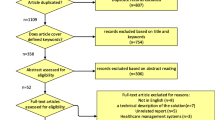Abstract
Objective
To determine the socio-demographic and health factors associated with a biomedical phenotype of successful aging (SA) among Mexican community-dwelling elderly.
Design, setting and participants
Cross-sectional study of 935 older adults aged 70 or older participating in the Mexican Study of Nutritional and Psychosocial Markers of Frailty.
Measurements
SA was operationalized in accordance with the phenotype proposed by Rowe and Kahn. Univariate and multivariate logistic regression analyses were carried out in order to identify the correlates of SA.
Results
The phenotype of SA was present in 10% of participants. Age (P < 0.001), illiteracy (P = 0.021), polypharmacy (P < 0.001), and physical pain (P < 0.001) were factors independently and inversely associated with the presence of the SA phenotype. The only variable positively associated with SA was good self-perceived health-status (P < 0.001).
Conclusion
Although age is not modifiable, several other factors associated with SA are. If we are to promote SA, efforts should be made towards improving those modifiable factors negatively associated with its presence, such as pain or polypharmacy. Also, enhancing factors positively associated to it might play a role in improving wellbeing.



Similar content being viewed by others
References
Zúñiga E, García JE. El envejecimiento demográfico en México. Principales tendencias y características. In: CONAPO (ed) Situación demográfica de México, México, 2008;pp 93–100
Gutiérrez-Robledo LM. Looking at the future of geriatric care in developing countries. J Gerontol A Biol Sci Med Sci 2002;57:M162–M167
Villagómez, P, Bistrain, C. Situación demográfica nacional. In: CONAPO (ed) Situación demográfica de México, México, 2008;pp 11–20
Martin P, Kelly N, Kahana B et al. Defining successful aging: a tangible or elusive concept? Gerontologist 2015;55:14–25
Depp CA, Jeste DV. Definitions and predictors of successful aging: a comprehensive review of larger quantitative studies. Am J Geriatr Psychiatry 2006;14:6–20
Rowe JW, Kahn RL. Successful aging. Gerontologist 1997;37:433–440
Chaves ML, Camozzato AL, Eizirik CL, Kaye J. Predictors of normal and successful aging among urban-dwelling elderly Brazilians. J Gerontol B Psychol Sci Soc Sci 2009;64:597–602.
Gureje O, Oladeji BD, Abiona T, Chatterji S. Profile and determinants of successful aging in the Ibadan Study of Ageing. J Am Geriatr Soc 2014;62:836–842
McLaughlin SJ, Connell CM, Heeringa SG, Li LW, Roberts JS. Successful aging in the United States: prevalence estimates from a national sample of older adults. J Gerontol B Psychol Sci Soc Sci 2010;65B:216–226
Avila-Funes JA, Pina-Escudero SD, Aguilar-Navarro S, Gutierrez-Robledo LM, Ruiz-Arregui L, Amieva H. Cognitive impairment and low physical activity are the components of frailty more strongly associated with disability. J Nutr Health Aging 15:683–689
Katz S2011;, Downs TD, Cash HR, Grotz RC. Progress in development of the index of ADL. Gerontologist 1970;10:20–30
Folstein MF, Folstein SE, McHugh PR. «Mini-mental state». A practical method for grading the cognitive state of patients for the clinician. J Psychiatr Res 1975;12:189–198
Nagi SZ. An epidemiology of disability among adults in the United States. Milbank Mem Fund Q Health Soc 1976;54:439–467
Radloff LS. The CES-D scale: a self-report depression scale for the general population. Appl Psychol Meas 1977;1:385–401
Bushardt RL, Massey EB, Simpson TW, Ariail JC, Simpson KN. Polypharmacy: misleading, but manageable. Clin Interv Aging 2008;3:383–389
Tate RB, Lah L, Cuddy TE. Definition of successful aging by elderly Canadian males: the Manitoba Follow-up Study. Gerontologist 2003;43:735–744
Guralnik JM, Kaplan GA. Predictors of healthy aging: prospective evidence from the Alameda County study. Am J Public Health 1989;79:703–708
Strawbridge WJ, Cohen RD, Shema SJ, Kaplan GA. Successful aging: predictors and associated activities. Am J Epidemiol 1996;144:135–141
Leveille SG, Guralnik JM, Ferrucci L, Langlois JA. Aging successfully until death in old age: opportunities for increasing active life expectancy. Am J Epidemiol 1999;149:654–664
Dorantes-Mendoza G, Avila-Funes JA, Mejia-Arango S, Gutierrez-Robledo LM. Factors associated with functional dependence in older adults: a secondary analysis of the National Study on Health and Aging, Mexico, 2001. Rev Panam Salud Publica 2007;22:1–11
Sudore RL, Yaffe K, Satterfield S, et al. Limited literacy and mortality in the elderly: the health, aging, and body composition study. J Gen Intern Med 2006;21:806–812
Hajjar ER, Cafiero AC, Hanlon JT. Polypharmacy in elderly patients. Am J Geriatr Pharmacother 2007;5:345–351
Hanlon JT, Schmader KE, Semla TP. Update of studies on drug-related problems in older adults. J Am Geriatr Soc 2013;61:1365–1368
Bennett A, Gnjidic D, Gillett M, et al. Prevalence and impact of fall-risk-increasing drugs, polypharmacy, and drug-drug interactions in robust versus frail hospitalised falls patients: a prospective cohort study. Drugs Aging 2014;31:225–232
Davis MP, Srivastava M. Demographics, assessment and management of pain in the elderly. Drugs Aging 2003;20:23–57
Strawbridge WJ, Wallhagen MI, Cohen RD. Successful aging and well-being: selfrated compared with Rowe and Kahn. Gerontologist 2002;42:727–733
Kahn RL. On «Successful aging and well-being: self-rated compared with Rowe and Kahn». Gerontologist 2002;42:725–726
Mossey JM, Shapiro E. Self-rated health: a predictor of mortality among the elderly. Am J Public Health 1982;72:800–808
González-Pichardo AM, Navarrete-Reyes AP, Adame-Encarnación H, et al. Association between self-reported health status and frailty in community-dwelling elderly. J Frailty Aging 2014;3:104–108
Hodge AM, O’Dea K, English DR, Giles GG, Flicker L. Dietary patterns as predictors of successful ageing. J Nutr Health Aging 2014;18:221–227
Author information
Authors and Affiliations
Corresponding authors
Rights and permissions
About this article
Cite this article
García-Lara, J.M.A., Navarrete-Reyes, A.P., Medina-Méndez, R. et al. Successful aging, a new challenge for developing countries: The Coyoacán Cohort. J Nutr Health Aging 21, 215–219 (2017). https://doi.org/10.1007/s12603-016-0728-8
Received:
Accepted:
Published:
Issue Date:
DOI: https://doi.org/10.1007/s12603-016-0728-8




